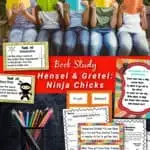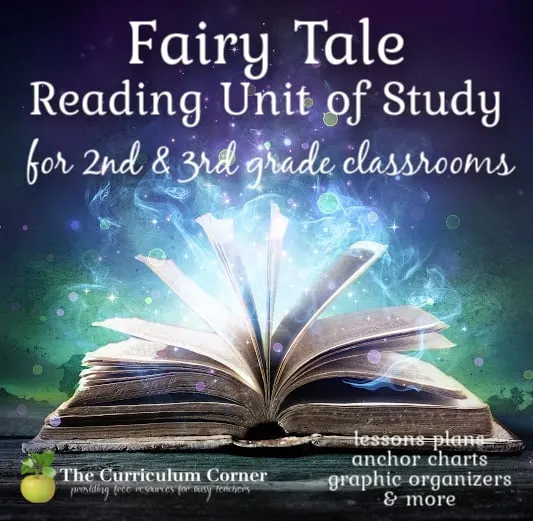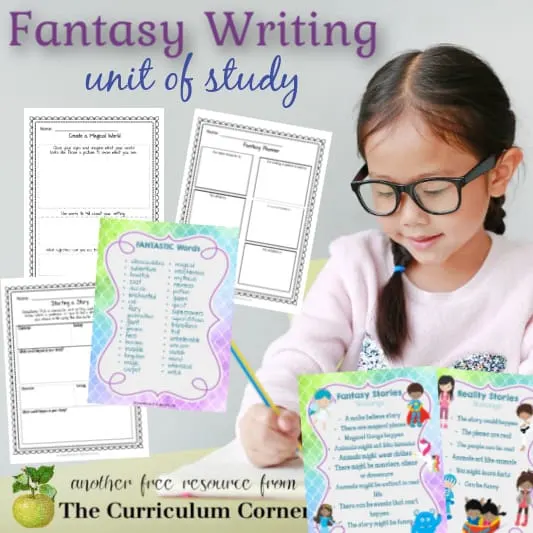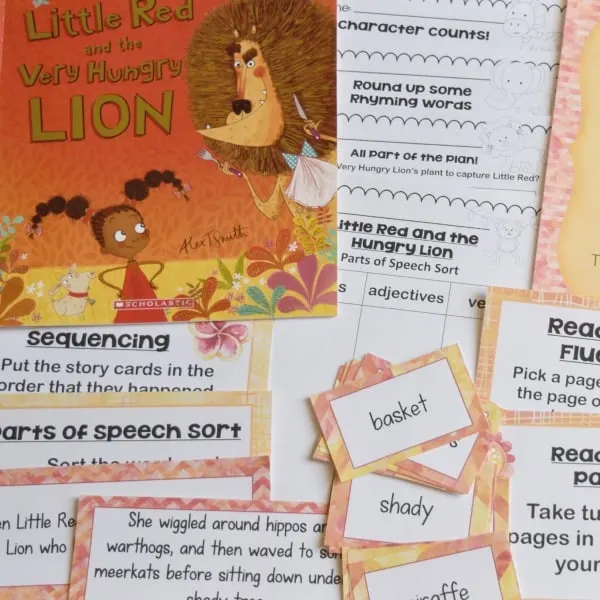This Hensel and Gretel: Ninja Chicks book study will be a fun and engaging addition to your reading workshop.
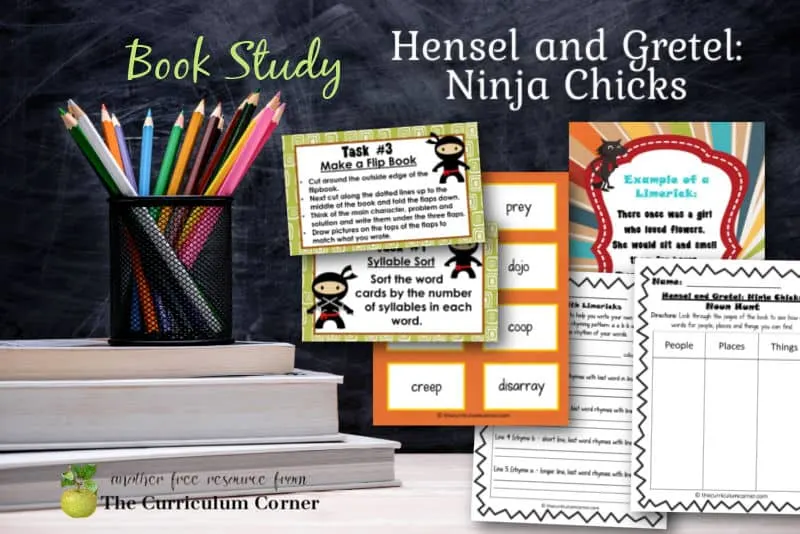
This is another free resource for teachers and homeschool families from The Curriculum Corner.
Hensel and Gretel Ninja Chicks Book Study
This humorous book by Corey Rosen Schwartz and Rebecca J. Gomez is illustrated by Caldecott Medal winner Dan Santat.
This fractured fairy tale is written completely in limericks and is so fun to read aloud.
This study is newly updated to include versions of the printables with white backgrounds. This will help those teachers looking to conserve color ink.
The Story of Ninja Chicks
In this story, two brave chicks are faced with the kidnapping of their parents by a wicked fox.
They learn and practice ninjutsu in hopes of finding and rescuing their mother and father.
The story takes the two chicks on their journey that very clearly parallels the classic tale of Hansel and Gretel. Students will enjoy the modern spin.
The limericks add a funny touch to this book and are very well written with lots of wonderful vocabulary.
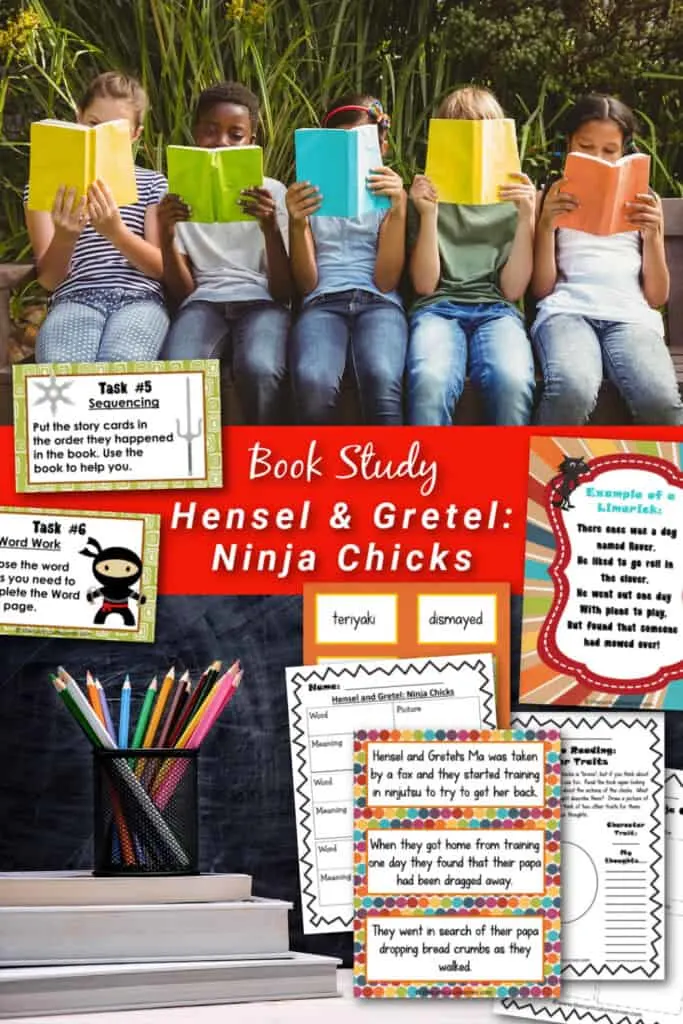
This Ninja Chicks Collection
The resources presented here are designed to accompany this story and can be used in mini-lessons or at literacy centers.
You may want to purchase a few extra copies of the book to help children complete the activities.
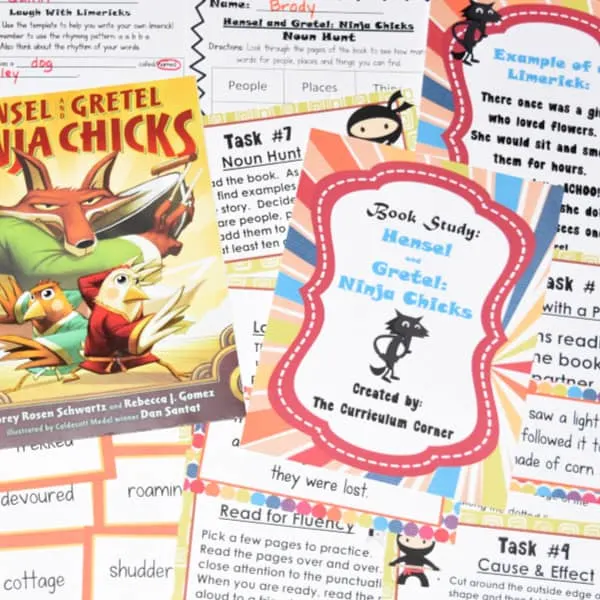
Hensel and Gretel Ninja Chicks Download
Task Cards: The first pages of this collection are a set of 13 task cards. These will give the directions for the activities we will share below. Use to provide directions at a center.
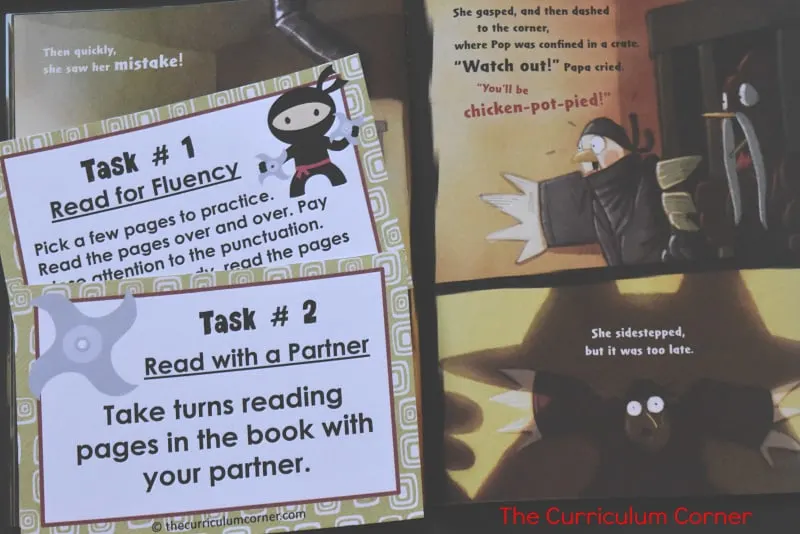
Noticings: This is a blank anchor chart for noticings and/or predictions. You can use this before the reading of the book as you go on a picture walk with your class. Use the chart to record details about the illustrations or text presentation of the story. Students can share predictions based on the pictures the students are looking at. There is also a students noticings page.
Flip Book: This flip book is designed to go in an interactive notebook, but doesn’t have to. Students cut the outside shape and then cut on the dotted lines. They will lift the flaps and write about the main character, problem and solution under each of the three flaps. On top they will draw a picture to show each.
Cause & Effect Arrows: Students can place this page into an interactive notebook, but again doesn’t have to be. Students choose four events that occurred in the story, think of what caused those events and then sketch a picture to go with the event.
Sequencing Cards: Each of these cards has a sentence about an event in the story. Students can use the book to help them place the cards in the order in which they happened. You could also have students use these cards for fluency practice as well.
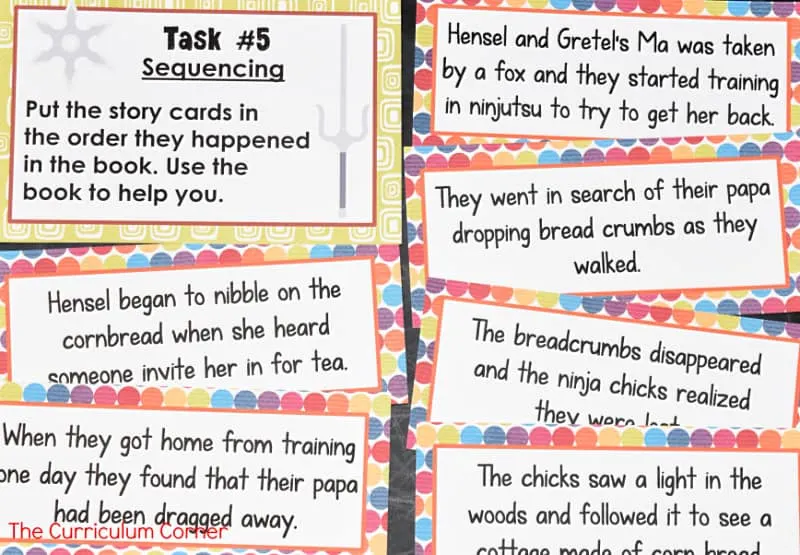
Word Work: You’ll find three different word work pages, a syllable sort and a collection of 41 word cards. Use the words for the pages included. The vocabulary for this book is fairly difficult. We suggest you discuss this vocabulary before or during your reading the book so the students understand their meanings.
Noun Hunt: Students flip through the book to find examples of different types of common nouns on the pages.
Book Review: These two pages provide a space for students to write a book review. They can illustrate their favorite part.
Respond to Reading: We have included three different page formats. Students can respond to their reading by comparing the story of the Ninja Chicks and another Hansel & Gretel story.
Writing Prompts: There are two different writing prompts to choose from. You will find simple versions of blank lined papers to use for your own ideas.
Story Maps: There are three different versions of story maps. Choose the one that best suits your students’ needs.
Blank Anchor Charts: You can use these as needed throughout your study.
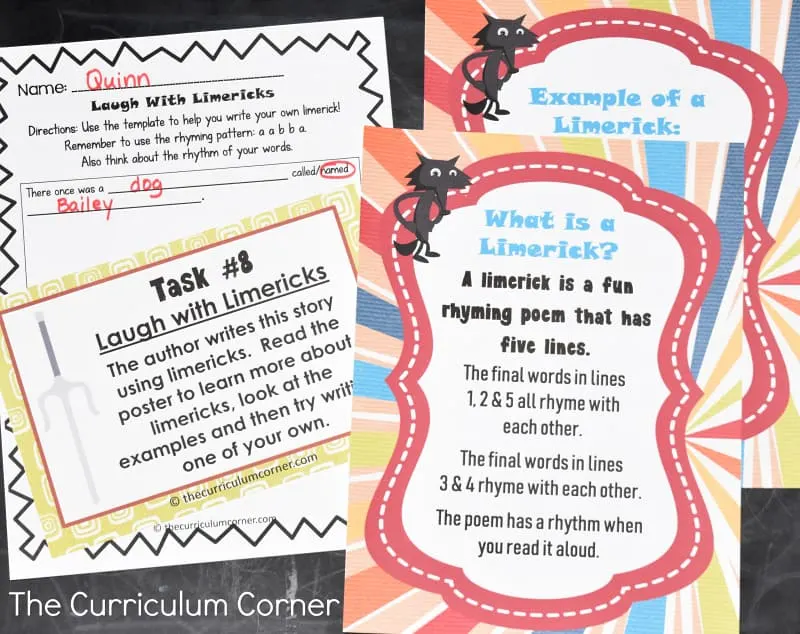
Learning about Limericks
This book offers a wonderful opportunity for children to explore limericks.
What are limericks?
Limericks are a type of poetry.
They are exactly five lines long.
Every limerick follows the same pattern. They have an AABBA rhyming scheme. The first, second and fifth lines must rhyme. The third and fourth lines must rhyme.
Most of the times limericks are silly with the final line usually being the funniest.
Laugh with Limericks: Since this story is written entirely in limericks, give your students a chance to write their own!
You will find an anchor chart describing the structure of limericks. There are also five different examples for students to use as models.
If your students enjoy writing their own limericks, encourage them to explore more during writing workshop.
You can download this free book study PDF here:
Looking for additional resources to add to your fairy tale study in the classroom? Try these freebies we have created:
As with all of our resources, The Curriculum Corner creates these for free classroom use. Our products may not be sold. You may print and copy for your personal classroom use. These are also great for home school families!
You may not modify and resell in any form. Please let us know if you have any questions.

